Blockchain
Bitcoin Wallet Insights: Exploring the Timeframe to Mine One Bitcoin

Bitcoin mining is the computational process that secures the Bitcoin network and mints new Bitcoins as a reward. It involves dedicating significant computing resources to solving complex cryptographic puzzles. For any individual miner, a key question is: how long does it take on average to mine one Bitcoin?
While dependent on mining equipment and conditions, examining the variables that influence mining rates can provide perspective on achievable timeframes. Let’s explore the Bitcoin mining process and factors impacting the timeline for miners to acquire their first coin.
The Probabilistic Nature of Bitcoin Mining
Bitcoin mining is essentially a lottery where participants compete to solve a mathematical problem and create the next valid block. Successfully doing so earns the miner the right to include a new batch of transactions and mint fresh Bitcoin. However, finding a solution involves guessing trillions of random numbers per second with no guarantee of success.
On average the Bitcoin network produces a new block every 10 minutes. But for an individual miner, discovering a valid hash could take days or even months depending on the equipment. Similar to a lottery drawing, the more hashrate or “tickets” a miner has, the better the chances of hitting the jackpot. Solo miners face unpredictability, while mining pools smooth earnings over time.
Hardware Capabilities and Hashrate Output

The most important factor determining the Bitcoin mining timescale is the amount of hashrate measured in hashes per second. Hashrate depends on the processing power and efficiency of mining machines like ASICs and GPUs. More powerful units with cutting-edge chips can calculate many more solutions per second.
Output also varies based on other specifications like energy draw, cooling systems, and firmware. Units purchased more recently typically boast better performance than earlier generations. Maximizing hashrate within a given budget accelerates mining output and Bitcoin earnings.
Evolving Network Difficulty
Bitcoin’s network difficulty dynamically adjusts every 2016 block to maintain an average 10-minute discovery time as the hash rate fluctuates. If mining power on the network rises, the difficulty increases proportionally to compensate. The higher the difficulty, the more guesses are required to find a valid hash.
Since Bitcoin’s inception, network difficulty has risen over 20 billion times as ASICs have become faster. This makes mining new Bitcoins much harder now than in earlier years. Even the latest equipment with high hash rates faces greater difficulty earning each coin over time.
Energy Costs and Location
The cost of electricity to power energy-intensive mining rigs can make or break profitability. Areas with lower energy prices allow miners to operate more machines at higher margins. Places with excess renewable energy tend to attract larger mining operations.
Some miners even leverage flared natural gas that would otherwise be wasted. The lower the energy expenditure, the faster miners reach the breakeven point on equipment costs. Optimizing energy infrastructure is key to maximizing mining velocity.
Bitcoin’s Diminishing Block Subsidy

When originally launched, successfully mining one block awarded miners 50 Bitcoins. However, Bitcoin’s code reduces this block subsidy by half roughly every four years. In mid-2024 the next halving will drop the reward to just 3.125 Bitcoins per block solved.
As the block subsidy declines, mining each Bitcoin requires more time and resources. After the next few halvings pass, most mined coins will come from transaction fees rather than the subsidy. This gradually slows the minting of new Bitcoins over time by design.
Conclusion
While Bitcoin mining may seem straightforward at first glance, the actual timeline for acquiring coins is influenced by a complex interplay of factors. These include a miner’s hashrate capabilities, network difficulty, energy infrastructure, and the diminishing block subsidy. To succeed, miners must optimize across these variables.
As your Bitcoin wallet holding matures, the process of minting new coins naturally becomes more challenging. However, by leveraging economies of scale, access to low-cost power, and the latest hardware technology, miners persist in securing the network and facilitating the issuance of new Bitcoin.
Blockchain
Walrus Protocol Mainnet Launch Secures $140M Funding, Signals New Phase for Decentralized Storage

Walrus Protocol has officially entered the spotlight with the launch of its mainnet, backed by a substantial $140 million funding round. The debut marks a significant milestone not only for the project itself, but also for the broader decentralized storage sector, which has been steadily gaining relevance as blockchain applications demand more scalable, verifiable data solutions.
Supported by Mysten Labs, the team behind the Sui blockchain, Walrus is positioning itself as a next-generation decentralized storage protocol designed to handle the growing needs of AI-driven applications, media platforms, and on-chain data-intensive use cases.
Walrus mainnet launch brings decentralized storage into focus
The Walrus mainnet went live on March 27, 2025, signaling the transition from development to full production readiness. Alongside the launch, the project confirmed that it has secured $140 million in funding earmarked for ecosystem growth, infrastructure development, and long-term sustainability.
This funding level places Walrus among the better-capitalized decentralized storage initiatives in the market. Historically, large funding rounds at mainnet launch tend to increase institutional confidence, particularly when paired with clear tokenomics and a defined roadmap. For Walrus, the capital injection is expected to support validator participation, developer incentives, and expansion of real-world use cases.
The protocol operates closely with the Sui ecosystem, leveraging its performance-oriented architecture. This relationship could prove strategically important as projects built on Sui look for native, scalable storage solutions that align with the chain’s low-latency design.
Why Walrus stands out in decentralized data storage
Unlike earlier decentralized storage platforms that primarily focused on file persistence, Walrus is designed around verifiable data availability. This distinction is increasingly important for applications involving artificial intelligence models, dynamic media content, and large datasets that must remain auditable over time.
Traditional decentralized storage solutions often struggle to meet the performance and verification requirements of modern AI workloads. Walrus addresses this gap by enabling developers to prove that data exists, remains intact, and is retrievable without relying on centralized intermediaries. This capability positions Walrus at the intersection of decentralized infrastructure and next-generation data computation.
Industry observers note that this approach could make Walrus particularly attractive for AI training pipelines, decentralized content networks, and blockchain-based analytics platforms that require both scalability and trust minimization.
Leadership and ecosystem strategy
As part of the mainnet rollout, the Walrus Foundation appointed Rebecca Simmonds as managing executive. While detailed public information about her prior industry roles remains limited, the appointment suggests a focus on operational scaling and ecosystem coordination as the protocol transitions into its post-launch phase.
Governance and ecosystem management are expected to play a key role in Walrus’ evolution. With significant funding secured, the challenge now shifts from building technology to fostering sustained usage, onboarding developers, and maintaining network security through decentralized participation.
Market response and token dynamics
Following the mainnet launch, Walrus’ native token, WAL, became available on select trading venues, drawing early market attention. Initial trading activity showed elevated volume, a common pattern during early price discovery phases. While short-term price movements remain volatile, analysts often view such activity as a reflection of curiosity and positioning rather than long-term valuation.
Historically, decentralized infrastructure tokens tend to see more durable demand when network usage grows alongside speculation. For Walrus, the key metric to watch will be adoption by developers and data-heavy applications rather than short-term market performance.
What this means for the broader crypto landscape
The Walrus mainnet launch reinforces a broader trend within crypto: infrastructure is becoming as important as financial primitives. As blockchains mature, demand is shifting toward reliable data storage, computation, and verification layers that support complex applications.
With $140 million in funding, backing from Mysten Labs, and a focus on AI-compatible data storage, Walrus enters the market with meaningful advantages. Whether it can translate those advantages into sustained network activity will determine its long-term impact.
For now, the launch signals that decentralized storage is moving beyond simple file hosting and into a phase where verifiable, high-performance data infrastructure could become a foundational layer for Web3 and AI-driven ecosystems alike.
Blockchain
zkPass (ZKP) Adoption Accelerates After Upbit Listing as Global Exchange Support Grows
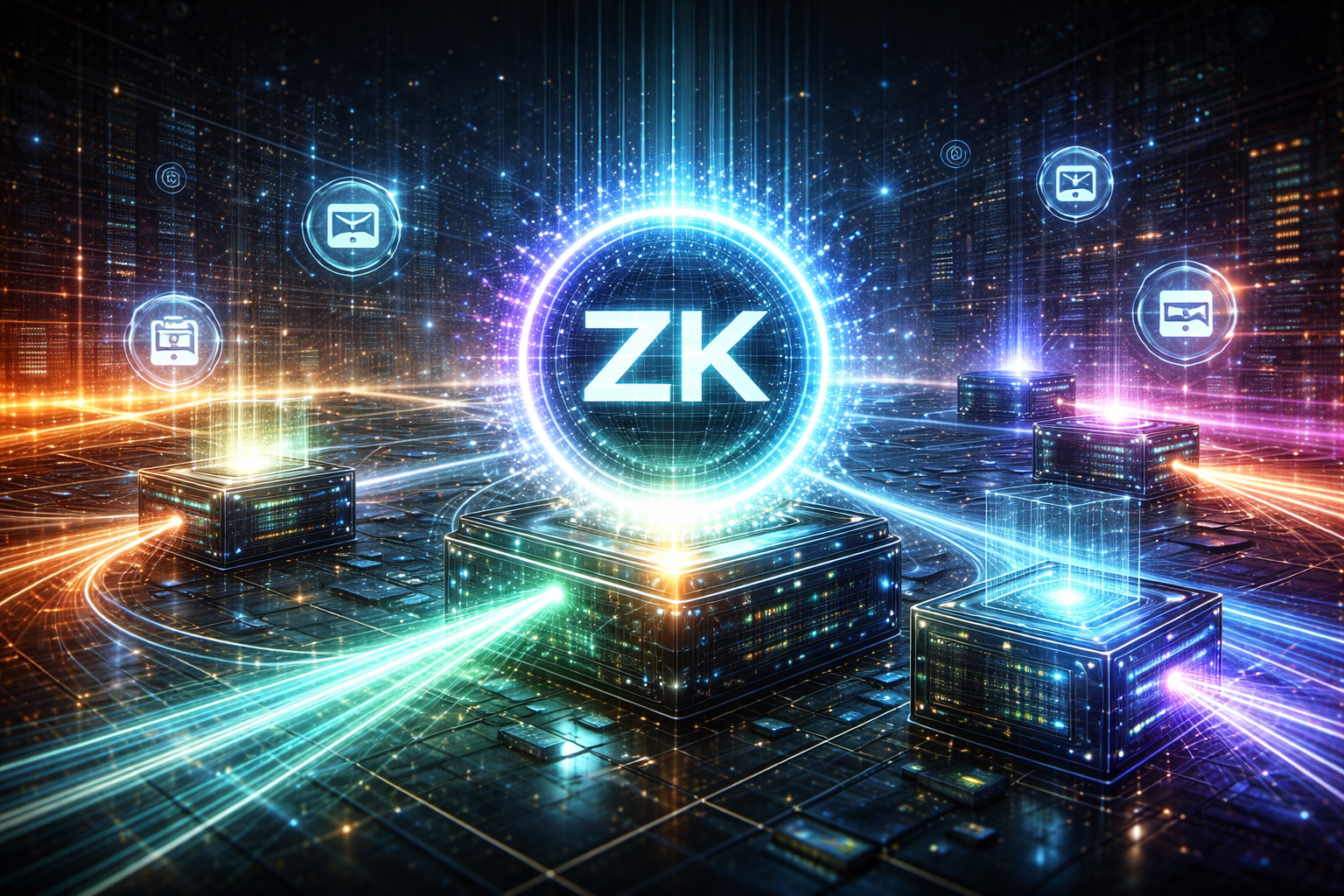
zkPass (ZKP) is drawing increased attention across the crypto market following its recent listing on Upbit, one of Asia’s largest and most influential cryptocurrency exchanges. The move has significantly expanded global access to ZKP while bringing greater visibility to zero-knowledge proof technology, a fast-growing area within Web3 infrastructure.
Rather than triggering short-term speculation alone, the Upbit listing has shifted the conversation toward adoption, accessibility, and the broader role of privacy-preserving technologies in digital identity and data verification.
Upbit Listing Expands Reach for zkPass
Upbit plays a central role in the South Korean crypto market, which is known for high retail participation, deep liquidity, and rapid engagement with emerging technologies. By securing a listing on the exchange, zkPass gains exposure to a large and active user base, alongside stronger fiat on-ramps and improved market depth.
For ZKP, the listing represents more than just another trading venue. It places the token within a regulated, high-visibility environment that often serves as an early indicator of broader market acceptance. Historically, assets listed on major regional exchanges like Upbit benefit from increased discoverability, especially among users who may not actively seek out smaller or niche projects.
The listing also comes alongside expanding exchange integrations elsewhere, suggesting a broader trend of growing platform support rather than a single isolated event.
Why Zero-Knowledge Proofs Are Gaining Attention
The renewed interest in zkPass reflects a wider shift toward privacy-preserving infrastructure. Zero-knowledge proofs allow users to verify information—such as identity credentials or eligibility—without revealing the underlying data. This approach addresses a critical challenge in Web3: balancing privacy with compliance.
As digital identity becomes more central to financial services, gaming, governance, and cross-platform access, tools that enable selective disclosure are increasingly viewed as essential. zkPass operates within this intersection, offering solutions that support user-controlled identity while remaining compatible with regulatory requirements.
Governments, enterprises, and developers are actively exploring frameworks that reduce data exposure while still meeting verification standards. In this environment, zero-knowledge systems are moving from experimental concepts to practical infrastructure, helping explain why projects like zkPass are gaining traction.
What Exchange Support Signals for Privacy-Focused Crypto
Major exchange listings often function as a form of market validation. While they do not guarantee price performance, they typically indicate that a project has met certain technical, legal, and operational criteria. For privacy-focused tokens, this is particularly meaningful, as such projects have historically faced scrutiny or limited access on centralized platforms.
Upbit’s support underscores growing acceptance of privacy-enhancing technologies that are designed to work alongside compliance frameworks, rather than against them. This aligns with a broader industry shift toward “regulatory-compatible privacy,” where users maintain control over their data without removing accountability.
As more exchanges add ZKP, liquidity improves and participation broadens, allowing the ecosystem to grow beyond early adopters and specialized users.
Why Investors Are Watching zkPass More Closely
Market observers are increasingly focused on zkPass not because of short-term price action, but due to its positioning within long-term Web3 narratives. Exchange listings tend to increase visibility, but sustained attention often depends on whether a project aligns with structural trends.
Privacy and identity remain among the most active areas of development in Web3. Zero-knowledge proofs are now considered a core building block for decentralized applications, particularly those involving credentials, access control, and data sharing.
For many investors, ZKP’s expanding exchange presence signals that privacy infrastructure tokens are moving closer to mainstream relevance. The focus has shifted from novelty to real-world use cases, adoption momentum, and integration into broader digital ecosystems.
As exchange support continues to expand and demand for secure data verification tools grows, zkPass is increasingly viewed as part of a larger movement toward privacy-first Web3 infrastructure rather than a standalone speculative asset.
Blockchain
Solana DEX Volume Surges to $1.7 Trillion, Overtakes Bybit in Spot Trading

Solana’s decentralized finance ecosystem has reached a major milestone, with decentralized exchange (DEX) spot trading volume surpassing $1.7 trillion year-to-date, according to data compiled by Artemis. The figure places Solana ahead of centralized exchange Bybit and positions it as the second-largest venue for spot trading globally, trailing only Binance.
The development highlights a notable shift in trader behavior, as activity continues to migrate from centralized platforms toward on-chain markets built on high-performance blockchains.
Solana’s DEX Growth Signals Structural Change
The surge in Solana DEX volume reflects more than short-term speculation. Throughout the year, decentralized platforms on the network have consistently captured market share, driven by improvements in infrastructure, liquidity depth, and user experience.
Solana’s technical design remains a key factor. High transaction throughput and low fees allow traders to execute strategies that would be cost-prohibitive on slower or more expensive networks. As a result, frequent traders, arbitrageurs, and market makers increasingly view Solana DEXs as viable alternatives to centralized exchanges.
The network’s recovery from earlier reliability concerns has also played a role. After periods of congestion and outages in previous years, Solana has delivered more stable performance, helping rebuild confidence among both users and developers.
Protocols Driving the Volume
Several native Solana protocols have contributed meaningfully to the rise in trading activity. Aggregators and automated market makers such as Jupiter, Orca, and Raydium have matured into core liquidity hubs, offering competitive pricing and deep order execution.
These platforms benefit from composability within Solana’s ecosystem, allowing traders to route orders efficiently across multiple liquidity pools. Over time, this has reduced slippage and improved execution quality, narrowing the gap between decentralized and centralized trading experiences.
In addition, growing participation from professional traders has increased overall volume durability. Rather than isolated retail spikes, Solana’s DEX flows increasingly resemble sustained institutional-style activity.
Solana vs. Centralized Exchanges
By surpassing Bybit in spot trading volume, Solana demonstrates that decentralized exchanges can compete directly with centralized platforms at scale. While Binance remains the largest global venue, the gap between centralized and decentralized trading is narrowing.
This trend reflects broader changes in market preferences. Traders are increasingly sensitive to counterparty risk, custody concerns, and regulatory uncertainty surrounding centralized exchanges. Decentralized platforms, which allow users to retain control of their assets, offer an alternative that aligns with these concerns.
At the same time, improved tooling and user interfaces have lowered the barrier to entry for on-chain trading, making decentralized platforms more accessible to non-technical users.
What This Means for Solana’s Future
The $1.7 trillion milestone reinforces Solana’s position as one of the most active DeFi ecosystems in the market. High DEX volume often correlates with stronger network effects, attracting additional developers, liquidity providers, and infrastructure projects.
If current trends persist, Solana’s decentralized exchanges could continue to capture a larger share of global trading activity, particularly during periods of market volatility when traders seek speed and cost efficiency.
More broadly, the data suggests that decentralized finance is no longer a niche alternative. On networks like Solana, it is becoming a central pillar of crypto market structure, capable of rivaling traditional centralized exchanges in both scale and relevance.
As DeFi adoption expands, Solana’s ability to support high-volume, low-cost trading positions it as a key player in the next phase of crypto market evolution.
-

 Crypto3 years ago
Crypto3 years agoCardalonia Aiming To Become The Biggest Metaverse Project On Cardano
-
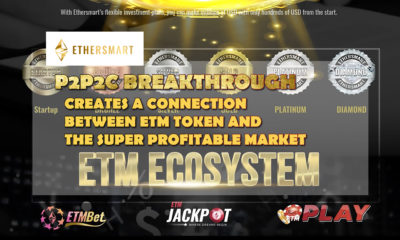
 Press Release5 years ago
Press Release5 years agoP2P2C BREAKTHROUGH CREATES A CONNECTION BETWEEN ETM TOKEN AND THE SUPER PROFITABLE MARKET
-
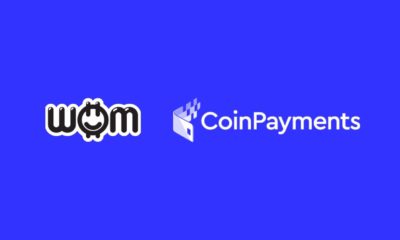
 Blockchain5 years ago
Blockchain5 years agoWOM Protocol partners with CoinPayments, the world’s largest cryptocurrency payments processor
-

 Press Release5 years ago
Press Release5 years agoETHERSMART DEVELOPER’S VISION MADE FINTECH COMPANY BECOME DUBAI’S TOP DIGITAL BANK
-
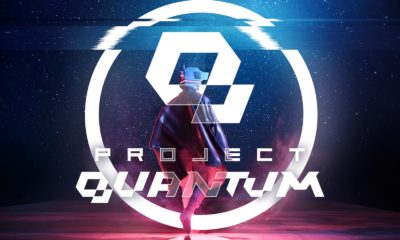
 Press Release5 years ago
Press Release5 years agoProject Quantum – Decentralised AAA Gaming
-
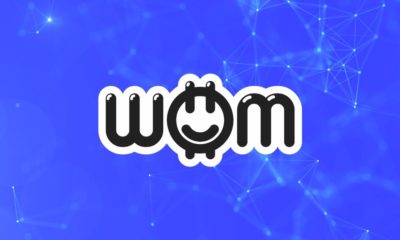
 Blockchain5 years ago
Blockchain5 years agoWOM Protocol Recommended by Premier Crypto Analyst as only full featured project for August
-

 Press Release5 years ago
Press Release5 years agoETHERSMART DEVELOPER’S VISION MADE FINTECH COMPANY BECOME DUBAI’S TOP DIGITAL BANK
-

 Blockchain6 years ago
Blockchain6 years ago1.5 Times More Bitcoin is purchased by Grayscale Than Daily Mined Coins






